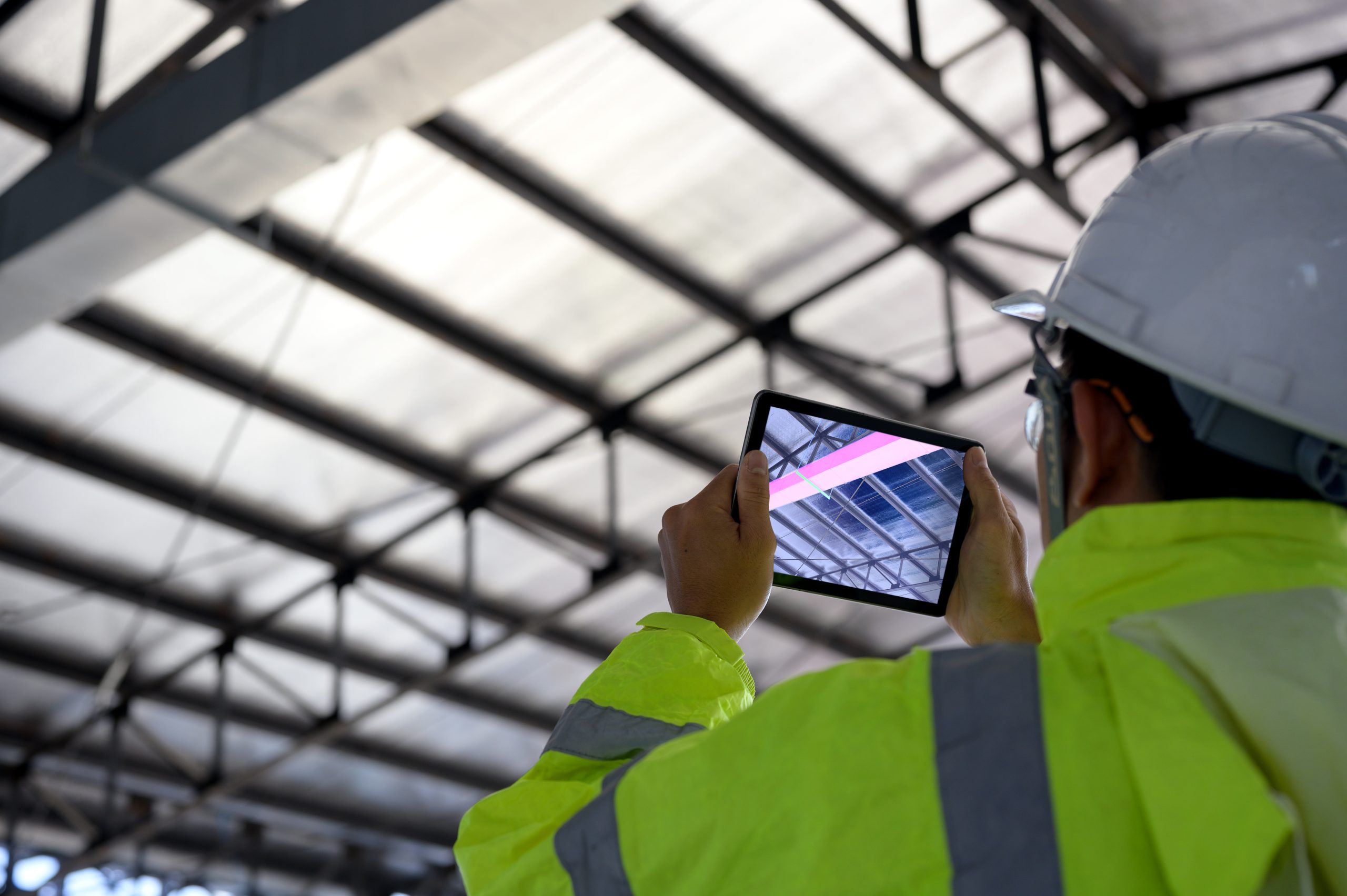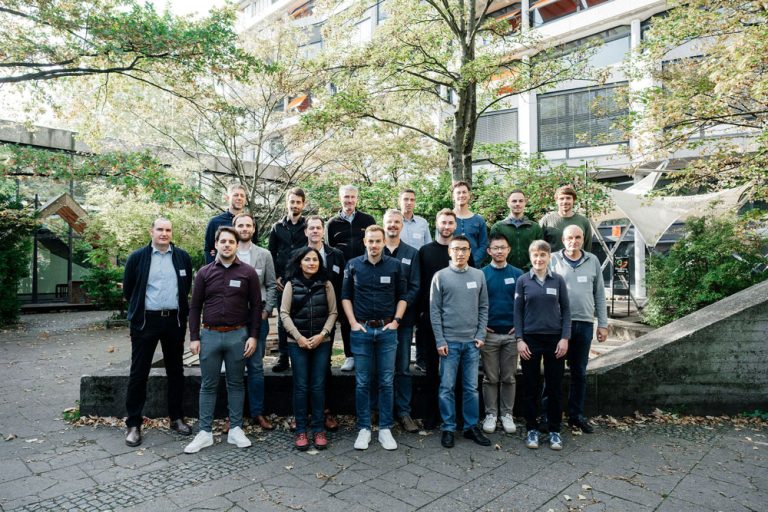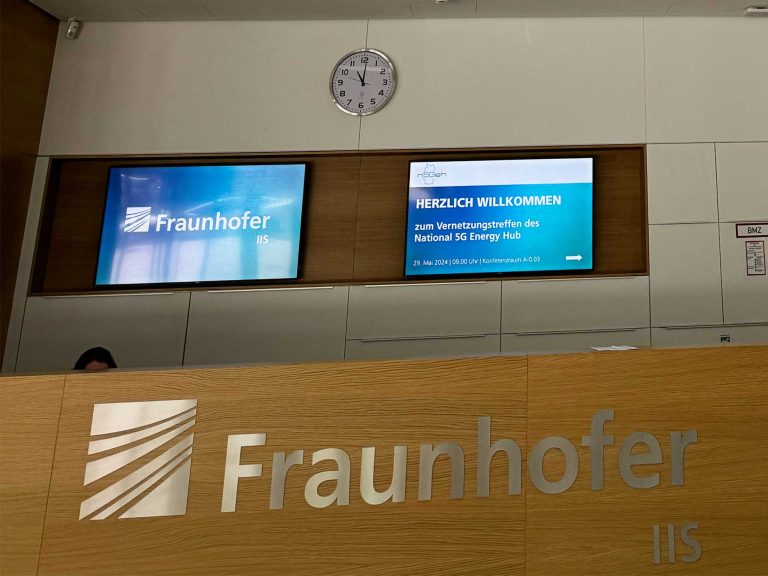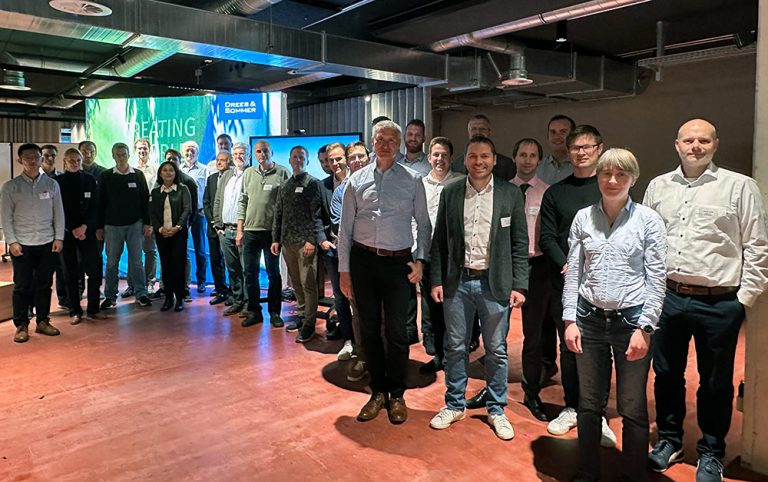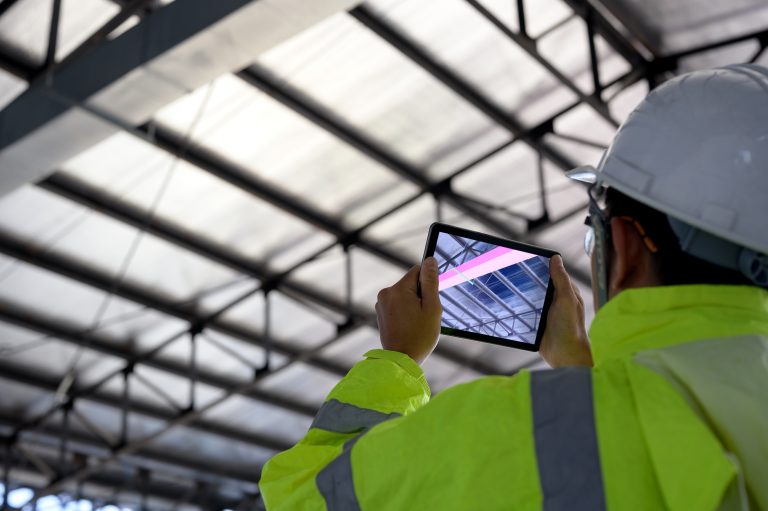Goal: Development of an indoor positioning
Description of work content and effort of the work steps
- Conceptual design and implementation: The specific conditions, possibilities and also limitations of the buildings and sensor constellations in the test building are worked out by means of an on-site survey. If not available, the building geometries are measured by means of laser scanners, building models as well as floor plans are derived and walkway plans are created as a definition of the inaccessible areas.
a
Positioning algorithms based on 5G and other transmitters: Individual singular positioning mechanisms (including trilateration, triangulation, fingerprinting) and their position information are investigated and the sensory information from 5G, BLE and WLAN is processed into radiomaps to determine rough possible positions within the building from these.
b
Stochastic filters for fusion and optimization of positioning methods: Basic filters (e.g. particle filters, (Unscented) Kalman filters) for pedestrian-based dead reckoning will be implemented which can fuse the multi-sensory information and use the existing active positioning infrastructure (WLAN, BLE Beacons, 5G) in the sense of "passive sensing" (e.g. use of received signal strength). The existing position information is then matched against the non-sensory supporting information (floor plans and walking path maps) to determine the current position and also to be able to pursue alternative position hypotheses.
c
Determining the orientation of the mobile device (e.g., smartphone) to support visual object recognition and natural feature tracking: The relative translational and rotational movements of the smartphone can be determined using the inertial sensors (accelerometer, gyroscope) integrated in the smartphone. These are used to infer the viewing direction of the smartphone camera and thus the movements of the user by means of dead reckoning.
d
Optimization of the transmitter configuration (5G wave propagation in the building, simulation using ray tracing): To optimize the transmitter configuration, a ray tracing simulator is used, which calculates the propagation paths of 5G signals in a building model using basic propagation scenarios such as a direct propagation, reflection and diffraction as well as the signal attenuation when penetrating common building materials. In this way, areas with very good or weak reception performance are identified.
e
Error correction algorithms for the wave delay distortion of the 5G signals during wall passage and investigation of the material-dependent error influences: In this context, a model-based correction of the spatial distances derived from the 5G measurements is to be carried out. For this purpose, the recorded building geometry will be analyzed by means of simulation calculations in order to be able to determine the wall-induced signal change and the resulting relative error influences. - Laboratory test of the algorithms in a target/actual comparison (milestone 1): By means of initial investigations, the implemented algorithms are evaluated by target-performance comparisons in order to be able to plan and carry out further iterations to optimize the developed algorithms.
- Increasing the update rate of positioning: To increase the update rate, the trade-offs between high temporal and high accuracy resolution of positioning information versus computational effort are investigated to arrive at a reasonable balance between each aspect.
- Development of approaches for accuracy and uncertainty modeling: The position estimation is to be extended by an intrinsic accuracy estimation in order to be able to provide information about the estimated validity of the statement in addition to the current position. Furthermore, the reliability and robustness of the position estimation shall be investigated in addition to the accuracy.
- Empirical evaluation of the test results from the real scenarios (milestone 2): The algorithmic position determination will be finally evaluated using the measurement data from the TIP.
Outcomes and risks; milestones with termination criteria.
- Foundations for the algorithm design were elicited
- Laboratory test of the algorithms in target/actual comparison (milestone 1)
- Increasing the update rate of the positioning
- Development of approaches for accuracy and uncertainty modeling
- Verification of the robustness of the positioning performance in the TIP (milestone 2).
Milestone 1
Laboratory test of algorithms in target/actual comparison successfully completed
Milestone 2
Real test of the algorithms in the target/actual comparison successfully completed
Risks/Consequences
The basic version of the positioning algorithm does not meet the requirements in terms of technical results (e.g. in terms of accuracy). In this case, further optimization options or other strategies for implementing sensor fusion are being sought.
Falls die 5G-Informationen für die Indoor-Positionierung nicht genauigkeitssteigernd eingesetzt werden kann, muss auf den genauigkeitssteigernden Beitrag der 5G-Technolgie für die Indoor-Positionierung verzichtet werden. Das Projekt kann mit verstärktem Fokus auf die Nutzung der 5G-Technologie für den Datentransfer für die AR-streaming-Komponente fortgeführt werden.
